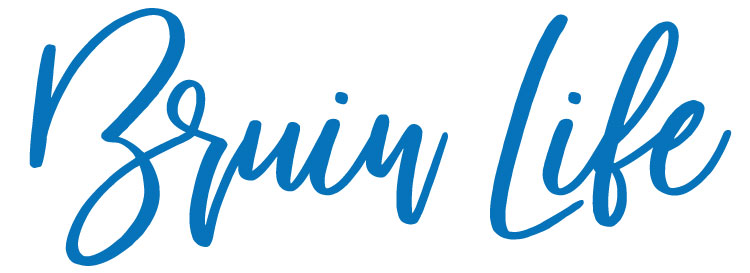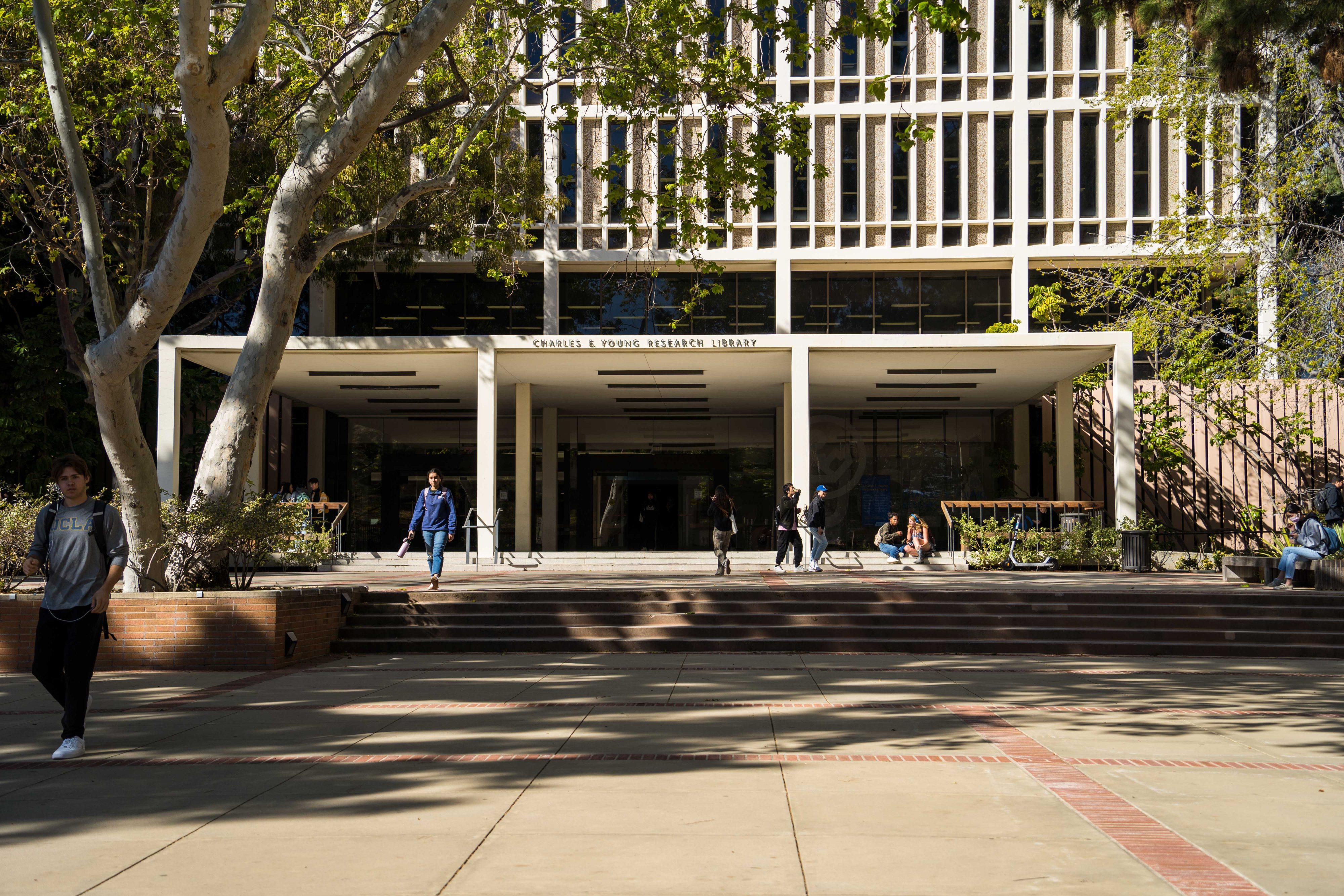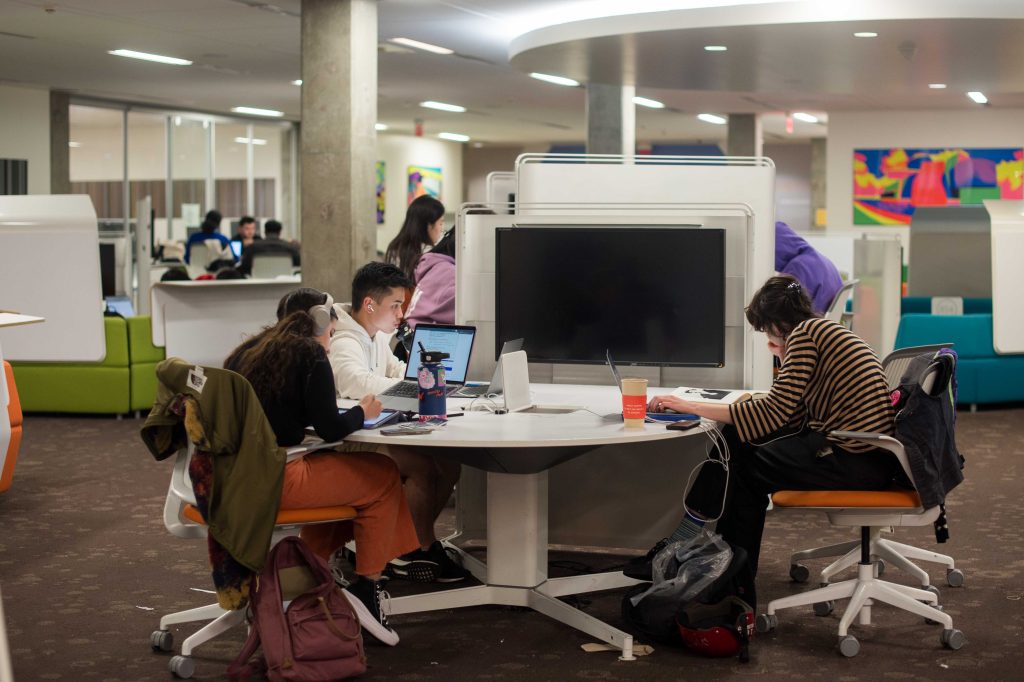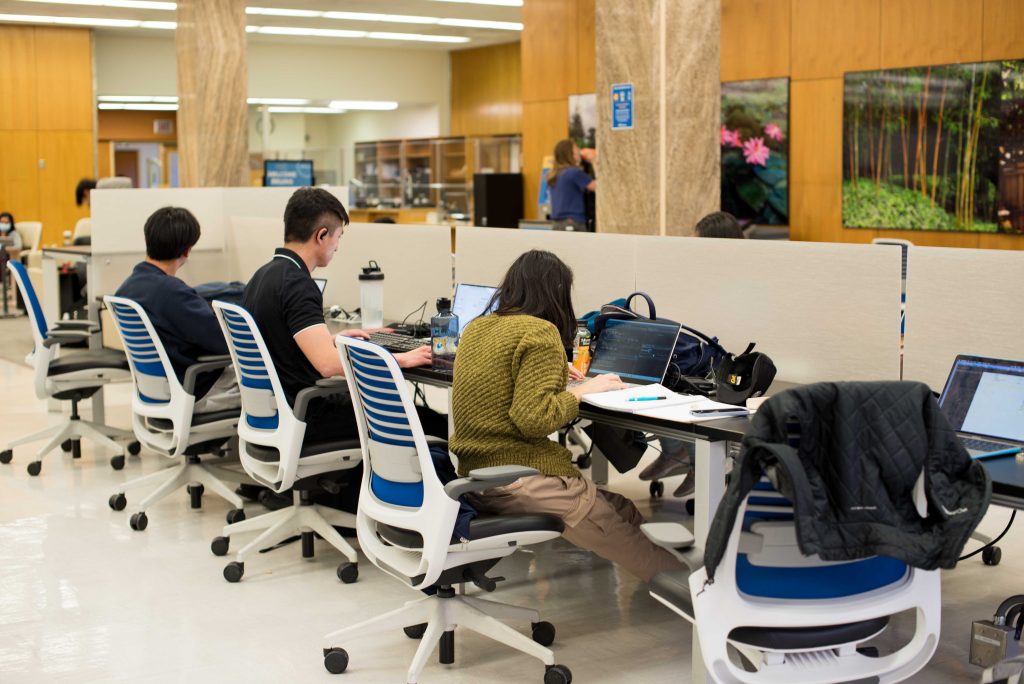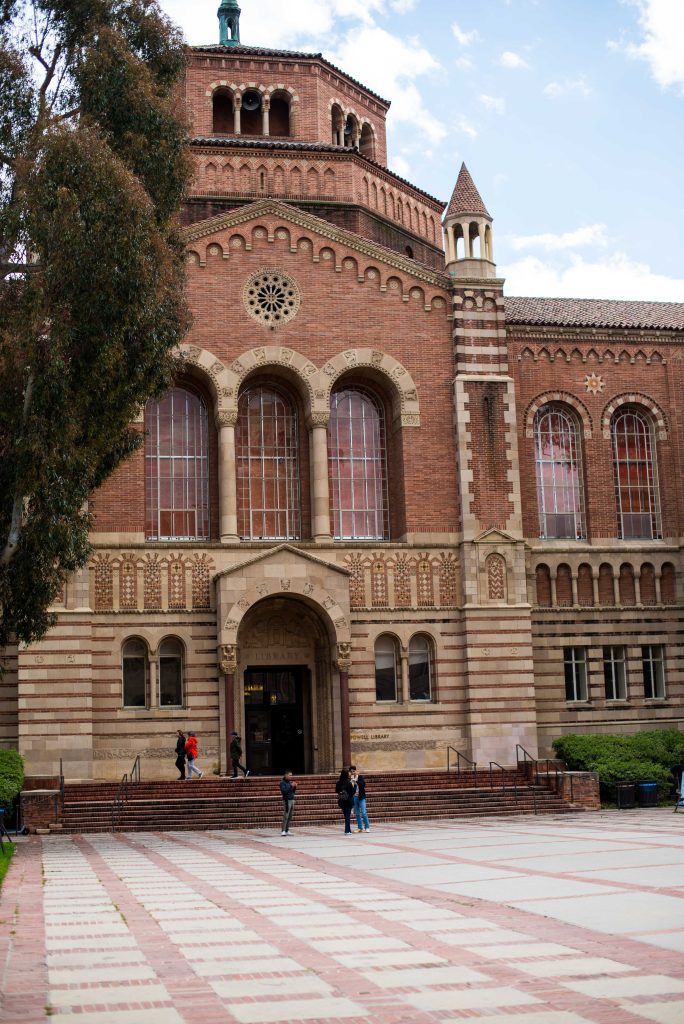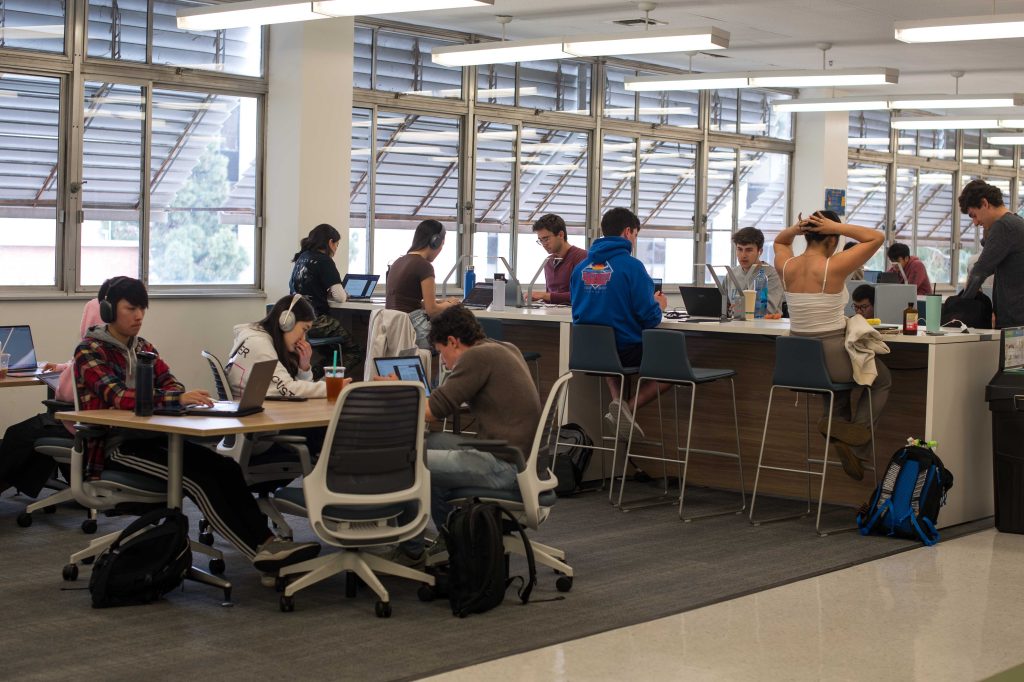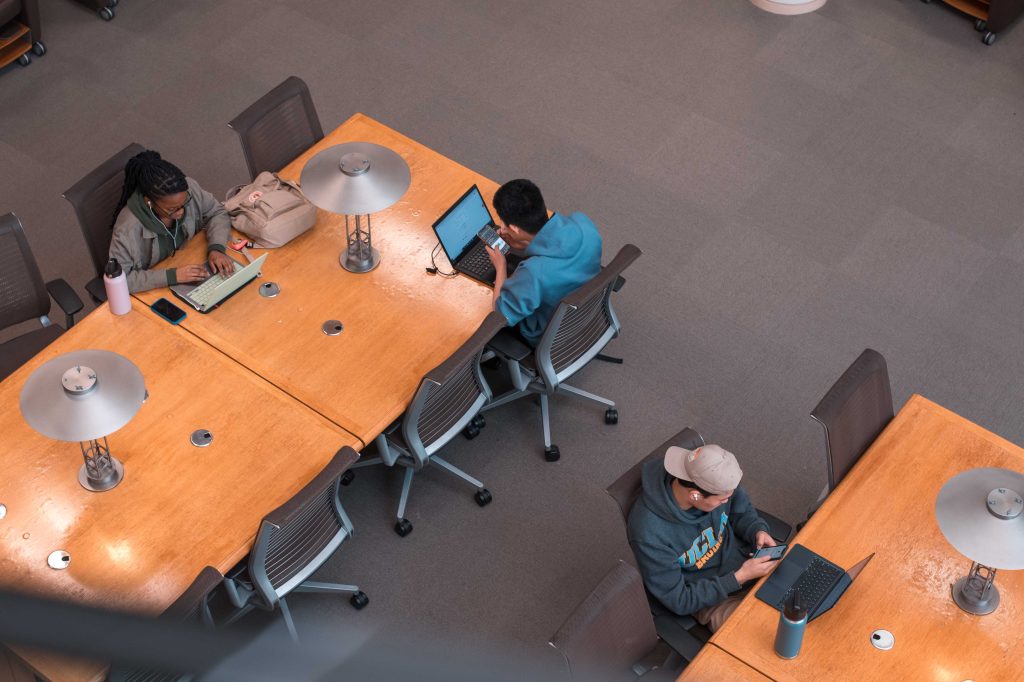With various search engines and resources offered by the internet, it could be difficult to imagine why an establishment with exclusively old documents and collections would be helpful for new-age problem-solving. But the libraries on campus house important old resources and newer digital materials, supporting students’ vast needs. The campus holds 12 libraries, as well as 12 archives and research centers dedicated to partnered departments.
As an English student, Natalia Tapia frequented campus libraries — both out of respect for the literary beacons and in order to pursue her degree. “This is a research university, and to better understand present-day issues and move forward without repeating old mistakes, it’s best to learn from the past,” said Tapia.
Tapia underscored the importance of documentation and issued a reminder that research played a huge factor in the creation of this institution. The vast archives serve more purposes than preservation, furthering not only students’ degrees but informing their reservations and judgments.
The libraries also play an important role in the increasingly digital age. As a political science student, senior undergraduate Aurora Mercado relied heavily on campus resources to access research and archives pertinent to her classes. Mercado also used the libraries’ laptop lending services on numerous occasions to complete and submit classwork, embracing their multifaceted uses.
“We literally have to use Canvas to submit all of our assignments and fill out actual assignments digitally through Drive, because what professor is passing out printed sheets to classes with 200-plus students?” said Mercado. “I’m really not someone who prefers to study in the library in general, but I have done laptop lending.”
Libraries offer more than just books and an academic environment. As technology advances, it has become important for students to have access to mandatory devices. In addition to equipment lending, most campus libraries also include research consultations, accessibility resources, help desks, event spaces, labs, data services, connections to off-campus resources and more. These buildings have helpful spaces that facilitate learning and real experts that could assist with studies.
On top of these general resources, some libraries offer spaces specifically for certain fields of study. Jaylin Banks, a music composition alumnus, expressed the excitement he felt when he learned the campus had an entire space catered to his passion.
“I honestly came in thinking that it might be difficult to fit in here, just because the amount of students can almost make you feel insignificant as an individual,” said Banks. “But there really is a community and space here for all walks of life, and I think the most important thing is feeling like you belong, which UCLA almost does overkill to ensure.”
The Libraries
Charles E. Young Research Library:
Charles E. Young Research Library — known as YRL and formerly known as the University Research Library, or URL — was named after the school’s longest-serving chancellor, Charles Edward Young. Although opened to all, YRL primarily supported graduate students and faculty that wished to expand their knowledge within humanities and social science fields. The building not only contained Café 451, a space for visitors to refuel, but also held research-level collections, digital files and materials in over 100 languages.
Louise M. Darling Biomedical Library:
Students pursuing health and life science careers had the Louise M. Darling Biomedical Library as a place to satiate their curiosity. With the chance to gain access to over 683,778 volumes related to medicine, engage in hands-on patient care and obtain digital files relevant to all biomedical fields, this library succeeded in serving all students within health-related communities.
The main library for undergraduate students, Powell acted as the singular research center that did not cater to one specific community but, instead, the unity of undergraduate fields. Powell provided spaces for concerts, readings and exhibits. “Night Powell” became a well-known quiet reading room, open 24 hours for students and faculty. Between its central location and very accommodating hours, Powell often acted as the most convenient library for Bruins to visit.
Science and Engineering Library:
Students and faculty who pursued careers related to engineering and physical sciences typically found one of the two Science and Engineering Library locations, or SEL locations, to be helpful. SEL Boelter was created to provide research and learning commons for the Samueli School of Engineering and all physical-science-related departments. SEL Geology, on the other hand, was established to provide maps, publications and other documentation to the geology department and other related sciences such as geochemistry and geophysics. With state-of-the-art lab and research equipment, the SEL libraries consistently supported students pursuing STEM fields.
The Arts Library contained more than 300,000 volumes, making it home to a large collection used by art students and faculty. Students who pursued anything from architecture and architectural history to film and photography tended to rely on this resource for their studies.
Eugene and Maxine Rosenfeld Management Library:
The Management Library resided within the Anderson School of Management. The staff in this particular building were business experts that worked to supply updated and current information daily to students, staff and even the general public through the esteemed Anderson Forecast. The Forecast was a renowned economic report producing valuable data used by campuses across the nation, facilitated by Management Library staff and resources. The library’s research center also uniquely worked with Anderson Computing and Information Services, which made forecast data all the more reliable for the business community.
With one of the largest music collections in North America, the Music Library had some of the most user engagement of all the campus libraries. This location was created to support the Herb Alpert School of Music by providing spaces for performances and access to over 400,000 physical items of all music genres. Students, faculty and visitors held conferences and exhibitions, as well as used its studio for production. This library received over 100,000 visitors and had over 35,000 items checked out annually, repeatedly proving its notable reputation.
Richard C. Rudolph East Asian Library:
Named after Richard C. Rudolph, former chair of the Department of Asian Languages and Cultures, the East Asian Library was located inside of the Charles E. Young Research Library and was established to assist research programs focused on East Asian studies. This research center grew in materials over the years and offered materials available in Chinese, Japanese and Korean.
Southern Regional Library Facility:
Like many other research locations, the Southern Regional Library Facility, or SRLF, offered a relaxing study space for student use. However, unlike other campus libraries, SRLF was established to hold materials from more than one University of California library. The facility kept materials in a climate-controlled environment on high-density shelves to maintain their preservation. Although these collections could not be accessed by the public, onsite staff members helped visitors retrieve select materials and aimed to keep very old, valuable documents in good condition.
With the goal of creating a research community through the development of data literacy and coding skills, the Library Data Science Center partnered with on- and off-campus groups. Through these partnerships, students scheduled consultations and joined research efforts by developing their own data and coding skills.
Film & Television Archive — Research and Study Center:
Located inside Powell Library, the Archive Research and Study Center collected and preserved over 350,000 films and 170,000 television shows, alongside additional media footage. It acted as a multi-purpose resource for creatives to gather, get inspired and produce.
The Library Special Collections, or LSC, actively obtained and preserved unique documents and materials. Located inside the Charles E. Young Research Library, LSC aimed to protect cultural heritage and foster an inclusive space where everyone had access to unique and valuable craft.
—
Featured Image Photographed by Julia Zhou/BruinLife
